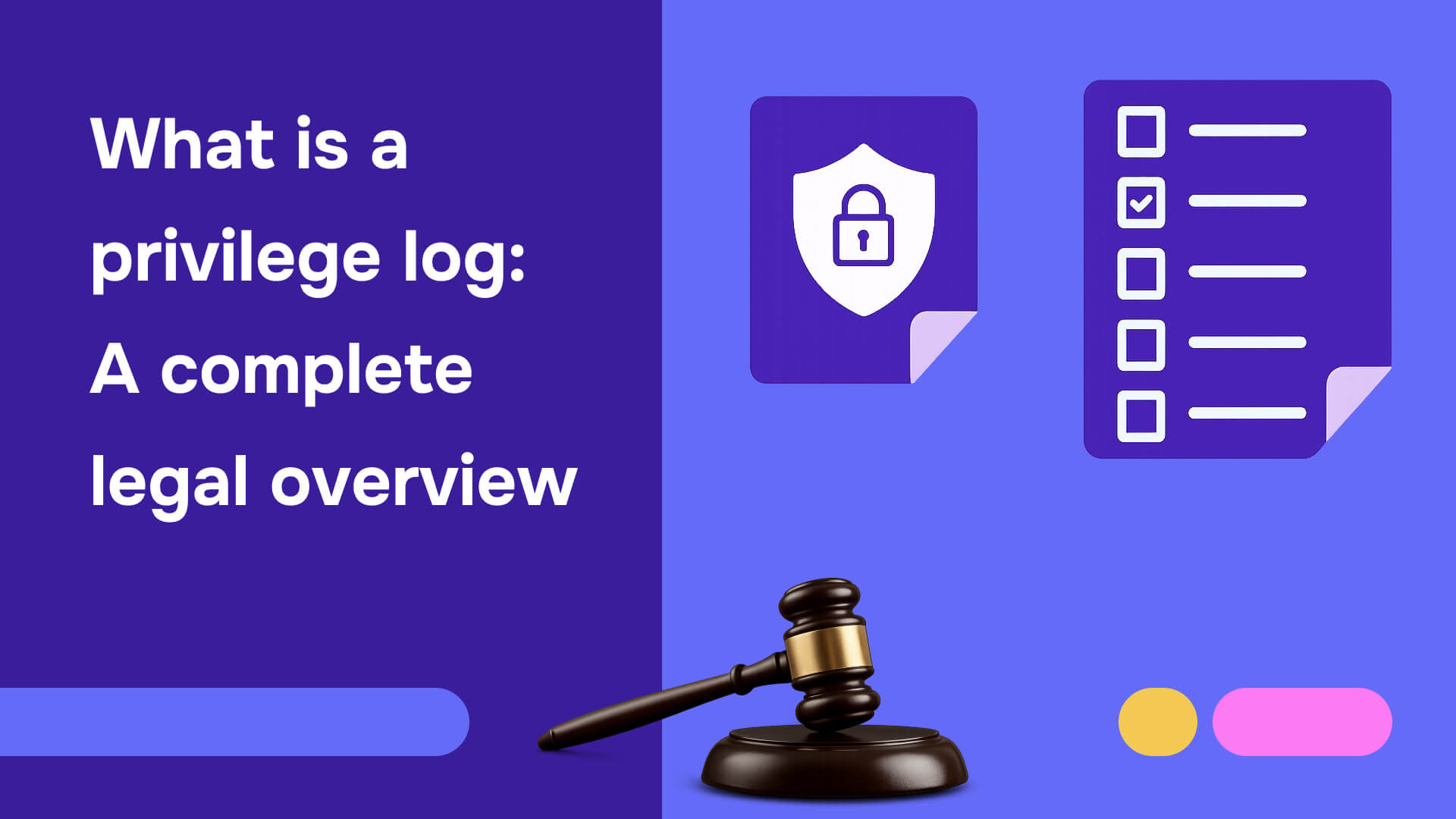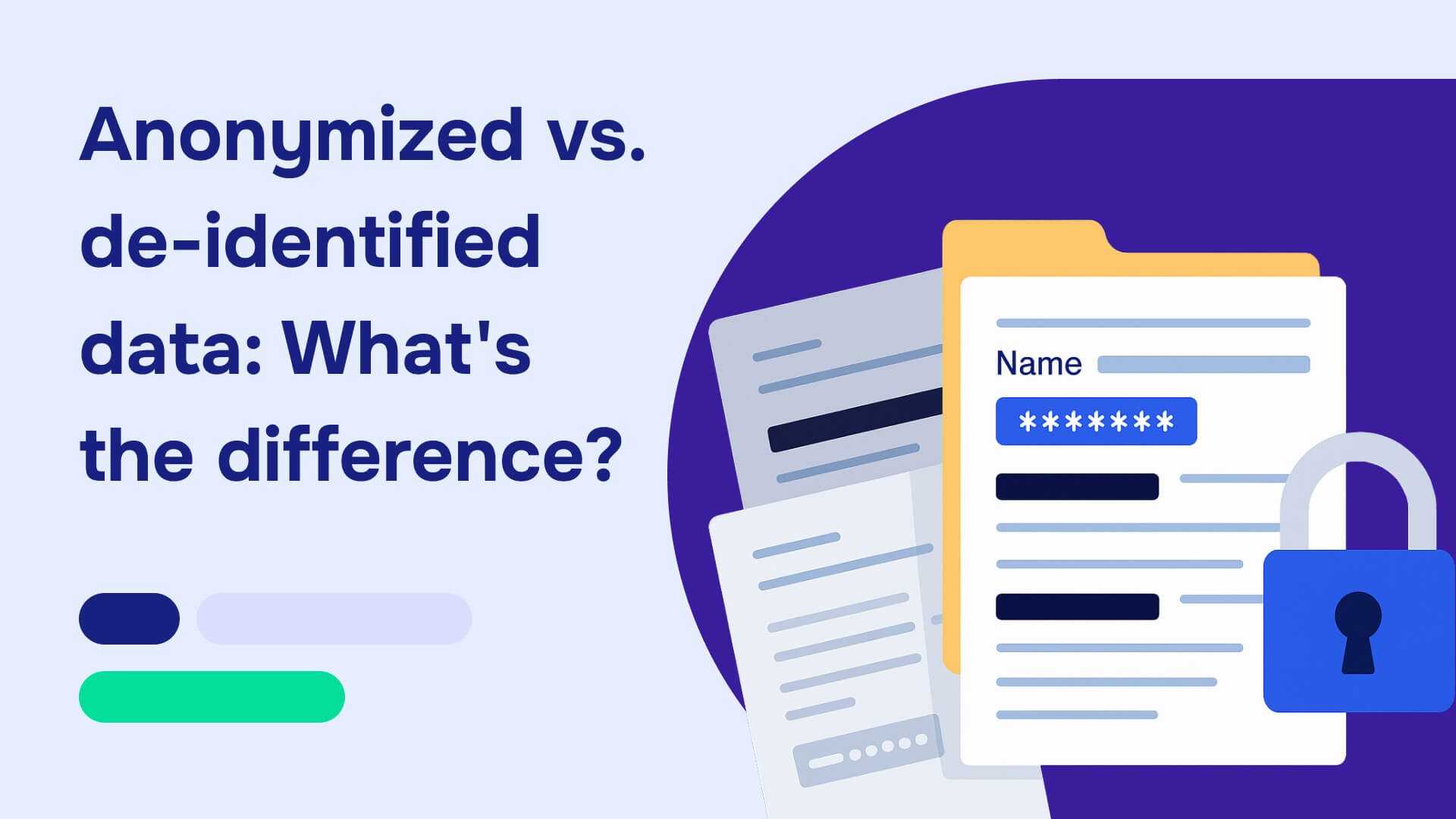Technology has greatly improved healthcare efficiency. However, it has also brought new challenges, not least in terms of protecting patient's healt information. In 2023, a staggering average of 364,571 healthcare records were breached daily. This alarming statistic highlights the urgent need to address data security in the healthcare sector.
Healthcare providers must implement robust security practices to safeguard confidential health records and prevent identity theft and financial fraud. These practices include redaction, access controls, encryption, regular audits, and comprehensive staff training.
This article will guide you through effective strategies on how to keep healthcare information confidential. You'll learn practical approaches to handle sensitive patient information and maintain privacy in an increasingly complex digital landscape.
What is Protected Health Information (PHI)?
While patient confidentiality refers to the healthcare provider's ethical and legal obligation to protect a patient's personal and medical information, PHI focuses on the individual's right to control access to their personal health information. The two concepts are closely related but distinct, and both are crucial for maintaining trust and ethical standards in medical practice.
Respecting patient confidentiality means keeping all health-related data private and secure, only sharing it when the patient gives explicit consent or when required by law.
Ensuring patient privacy, on the other hand, empowers patients to decide who can see their medical records and under what circumstances. This concept recognizes that patients should have autonomy over their sensitive data.
In practice, confidentiality is the duty of healthcare professionals to safeguard patient information, while privacy is the patient's right to determine how their information is used and shared. Together, these principles form the foundation of trust in the healthcare system and ensure that sensitive medical data remains protected.
Examples of PHI
Protected Health Information (PHI) refers to any personally identifiable health data that is created, received, stored, or transmitted by healthcare providers, insurers, or related entities. PHI includes a wide range of sensitive details that, if exposed, could lead to privacy violations, identity fraud, or theft.
Common types of PHI
- Patient identifiers – Names, addresses, Social Security numbers, birthdates, and other personal details that can be used to identify an individual.
- Medical records – Diagnoses, treatment histories, prescriptions, lab results, and imaging reports.
- Billing information – Insurance details, medical billing records, account numbers, and financial statements.
- Communication records – Emails, phone call transcripts, and messages between patients and healthcare providers.
- Biometric data – Fingerprints, retinal scans, voice recognition data, and other unique identifiers used in medical authentication.
- Device and wearable data – Health metrics from smartwatches, fitness trackers, or implantable medical devices like pacemakers.
- Clinical trial data – Patient records and data collected from medical research studies.
Exposing any of these details can result in identity theft, insurance fraud, or discrimination. With cyber threats on the rise, healthcare organizations must prioritize securing PHI through encryption, access controls, and redaction to ensure compliance with HIPAA and other regulations.
The importance of confidentiality in handling patient health information
Knowing how to protect patient information is crucial in healthcare. It not only puts patients at ease when seeking care and sharing sensitive information but also ensures compliance with privacy laws. Let's explore why maintaining the confidentiality of patient healthcare information is critical for your practice:
- Establishing trust: Guaranteed PHI and confidentialty build a strong foundation of trust between healthcare providers, staff, and patients. This trust encourages patients to seek necessary care promptly and disclose vital information for accurate diagnosis and effective treatment. Without the assurance that any information they share will be safe, some patients might withhold crucial details or avoid seeking care altogether, potentially compromising their health outcomes.
- Meeting compliance standards: Healthcare organizations are bound by strict privacy regulations and ethical codes concerning the handling of healthcare information and patient data. By adhering to these standards, you protect both your patients and your practice from legal issues, while maintaining the integrity of the healthcare system as a whole.
- Preventing harm: Secure patient data is essential in avoiding various risks. The gravity of this issue is evident in recent events. In 2023, at least 116 million people fell victim to significant health data breaches. Even more alarmingly, a ransomware attack on Change Healthcare in February 2024 resulted in the theft of protected health information (PHI) for up to one-third of the US population. Such breaches can lead to serious consequences, including discrimination and identity theft.
What are the top threats to security and privacy in healthcare?
In healthcare, the top security risks to PHI include hacking, cyberattacks, insider threats, and system and software vulnerabilities. By recognizing these vulnerabilities, healthcare providers can take proactive steps to enhance their security measures and better protect patient privacy. Let's examine the top threats in detail:
- Hacking and cyberattacks
Cybercriminals are constantly evolving their tactics, employing ever-more sophisticated methods such as ransomware, phishing, and advanced persistent threats to steal sensitive information or install malicious software. This ongoing cyber threat poses a significant challenge, especially for smaller healthcare providers, who may lack comprehensive cybersecurity measures or dedicated IT staff. - Insider threats
Patient information can be compromised not just by external attacks, but also by accidental exposure from within your organization. Employees or associates might unintentionally leak sensitive data due to human error or lack of proper training. Even when unintentional, these breaches can have serious consequences for patient privacy. - System and software vulnerabilities
Using outdated medical software or implementing weak password protocols creates security gaps in your systems. These vulnerabilities act as open invitations for cybercriminals, making your healthcare organization an easy target. Outdated systems often lack the latest security patches, leaving them exposed to known exploits that hackers can easily take advantage of.
What are the challenges of protecting patients' health information and confidentiality?
Healthcare businesses face significant difficulties maintaining patients' privacy and confidentiality due to regulatory complexity, increasing data volume, and the need to balance data access with privacy rights. Let's explore these issues in more detail:
- Regulatory compliance
Healthcare organizations must navigate a complex web of local, state, and federal regulations. The protection of patient health information data type is mandated by HIPAA. Ensuring consistent compliance across this varied regulatory landscape is a formidable task. Each jurisdiction may have its own specific requirements, making it challenging to implement uniform privacy practices across different locations or branches of a healthcare business.
- Data volume and complexity
The digital transformation of healthcare has led to an exponential increase in the amount of sensitive patient information being generated and stored. As medical technologies advance, the volume and types of data continue to grow. This data explosion makes it increasingly difficult to effectively secure every piece of information, requiring more sophisticated and comprehensive security measures.
- Balancing access and privacy
Providing high-quality care often depends on sharing patient data among different healthcare providers. However, this essential practice can sometimes conflict with PHI rights. Moreover, patients should have easy and secure access to their own health records. Striking the right balance between these sometimes competing priorities is crucial. Healthcare organizations must find ways to facilitate necessary information sharing while still maintaining robust privacy protections and giving patients control over their personal health information.
The 7 best ways of protecting patient health information
Addressing the issue of how to protect patient health information and confidentiality requires a multifaceted approach by healthcare providers, health care clearinghouses, and health plans. The most effective solution is to combine technology, staff training, and carefully crafted policies that adapt to the evolving healthcare landscape. Let's explore the seven best practices to safeguard this sensitive information from threats:
- Adhere to legal standards
Ensure your organization complies with all relevant patient privacy laws. Stay informed about Protected Health Information (PHI) and HIPAA requirements, including obtaining proper consent, providing privacy notices, allowing access to records, and fulfilling other obligations. Regularly review and update your practices to align with evolving regulations. - Use secure systems
Implement robust electronic health record (EHR) systems with strong security features. Look for systems that offer encryption, secure access controls, and regular software updates. Examples include DrChrono, Kareo Clinical, and AdvancedMD. These systems help protect patient data from unauthorized access and cyber threats. However, no system that also needs to allow hundreds or thousands of people to access information to do their jobs can be 100% secure or foolproof. The foundational layer of security is to ensure that only the minimum necessary amount of information is available by using redaction from the start. So, even in the event of a breach, leak, or error, the amount of data that might be exposed is limited. - Provide training
Conduct regular training sessions for your staff on safeguarding patient health information. Teach them to identify privacy risks and avoid unintentional exposure of sensitive data. Emphasize the importance of confidentiality in daily operations, and keep staff updated on new threats and best practices. - Implement policies and procedures
Develop and enforce clear guidelines on how your workforce handles, encrypts, redacts, stores, and shares patient health information. Document these policies for easy reference and conduct regular reviews to ensure ongoing adherence. Update procedures as needed to address new challenges or technologies. - Obtain patient consent
Secure explicit permission from patients before sharing their information with third parties. Exceptions include situations where sharing is legally required or essential for patient care. Maintain accurate records of all obtained consent to ensure compliance and transparency. - Develop an incident response plan
Establish a comprehensive strategy to address potential data breaches swiftly and effectively. Prepare protocols for notifying affected patients, regulators, and other stakeholders as required. Regularly test and update this plan to ensure its effectiveness in real-world scenarios. - Use redaction tools
Employ redaction software that automatically removes sensitive data from documents while preserving relevant health information. This approach allows for safe sharing of patient details and limits exposure in case of a breach. Automated redaction tools can significantly reduce the risk of human error in the process of protecting sensitive information.
Why Redactable is the best solution to protecting patient health information and confidentiality healthcare
To help intelligently address the challenges of how to protect patient privacy and confidentiality, Redactable offers a comprehensive solution. By combining advanced technology with ease of use, it empowers healthcare providers to safeguard sensitive information effectively.
Here's why Redactable is the ideal choice for healthcare providers:
- Employs advanced algorithms: Redactable employs sophisticated algorithms to automatically identify and redact protected data. This technology significantly reduces the risk of human error in the redaction process, providing a more reliable safeguard for sensitive information.
- Offers a user-friendly interface: With its intuitive design, Redactable requires minimal training for your staff. This user-friendly approach allows your team to quickly and efficiently redact documents, streamlining the process without compromising security.
- Effective redaction minimizes breach risks: By ensuring thorough and accurate redaction, Redactable helps minimize the potential costs and damages associated with data breaches. This includes reducing the risk of fines and protecting your organization's reputation.
- AI-driven for faster redaction: Leveraging artificial intelligence, Redactable dramatically speeds up the redaction process. Users can redact a 10-page document in less than 2.5 minutes, significantly improving productivity while maintaining high security standards.
- Regular updates for compliance: Redactable stays current with evolving security and regulatory standards through regular updates. This ongoing commitment ensures that your redaction practices remain compliant with the latest healthcare privacy requirements.Experience the benefits of Redactable firsthand. Try it for free today and discover how to protect patient health information efficiently and effectively.







